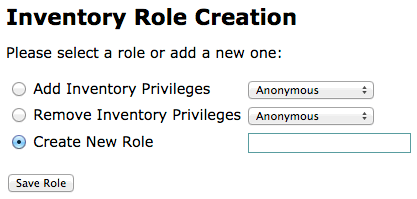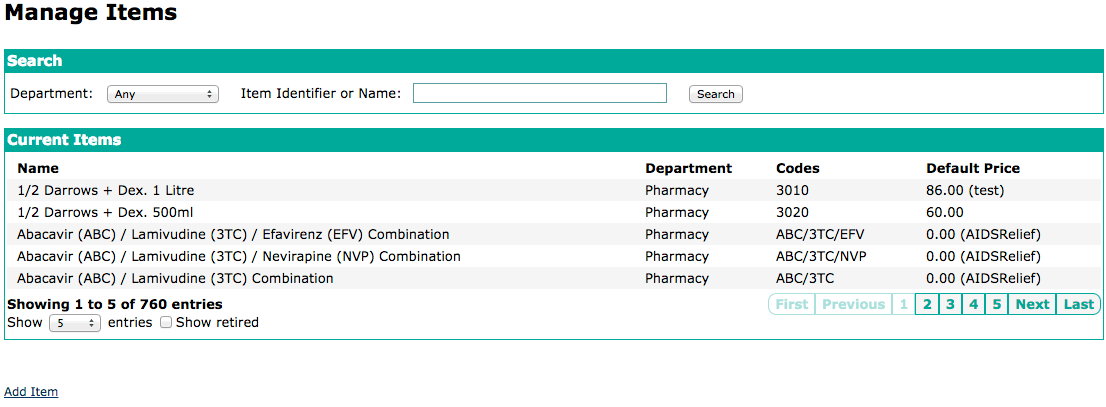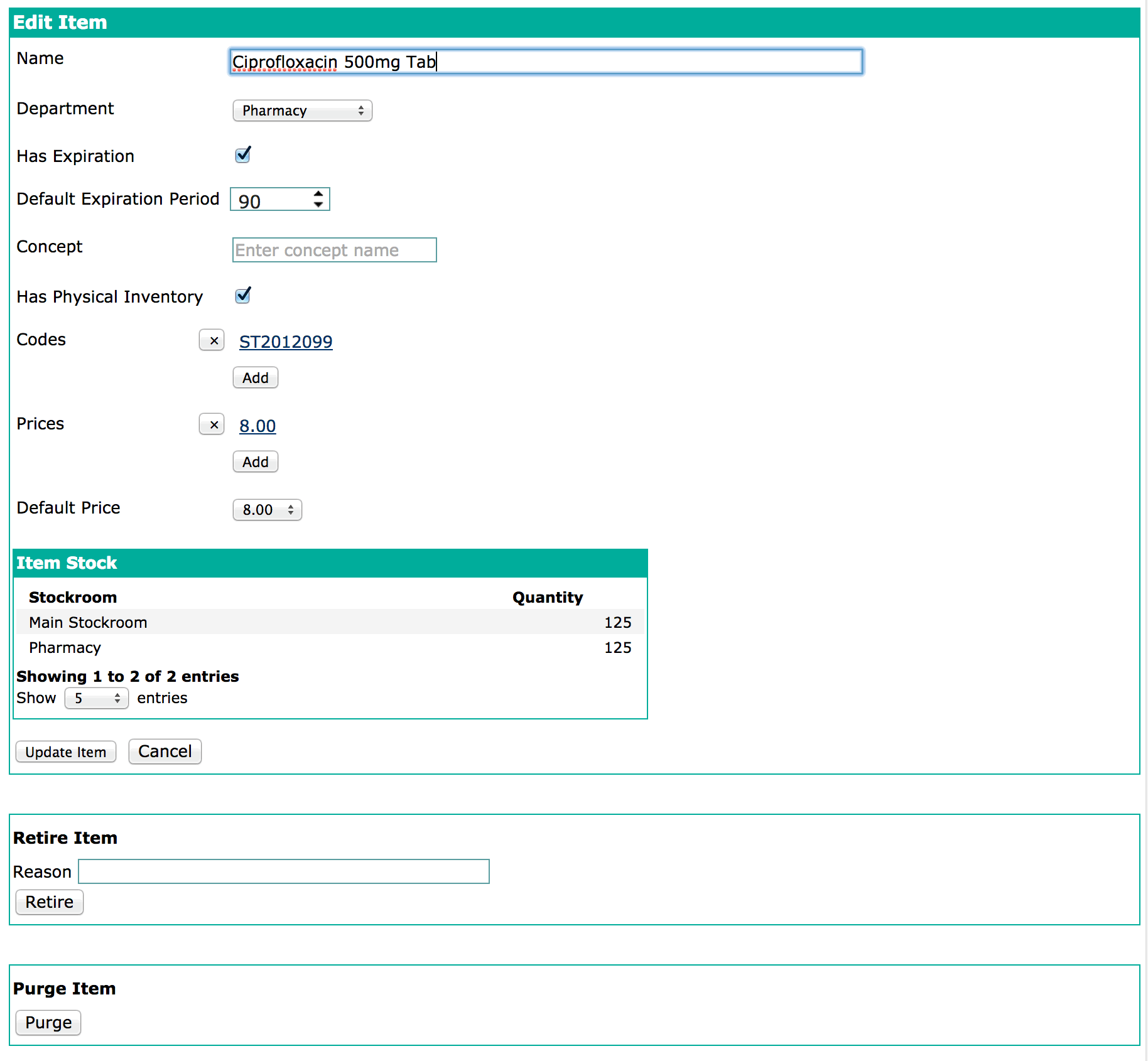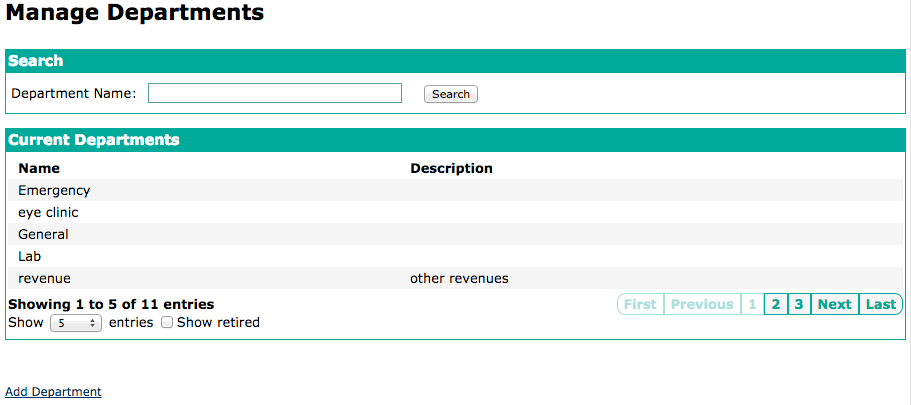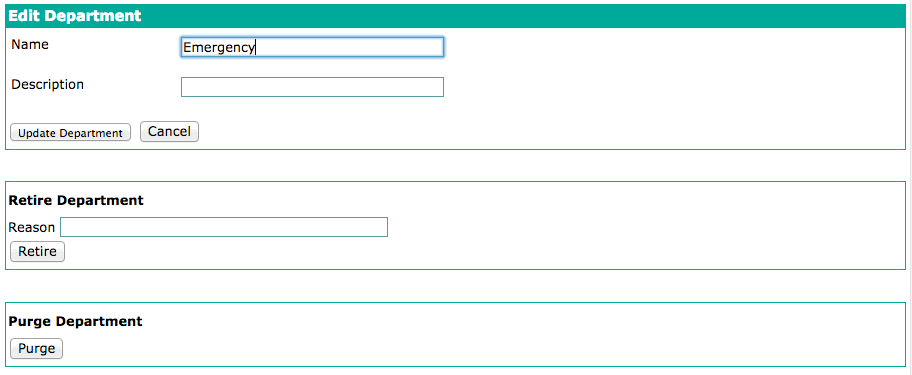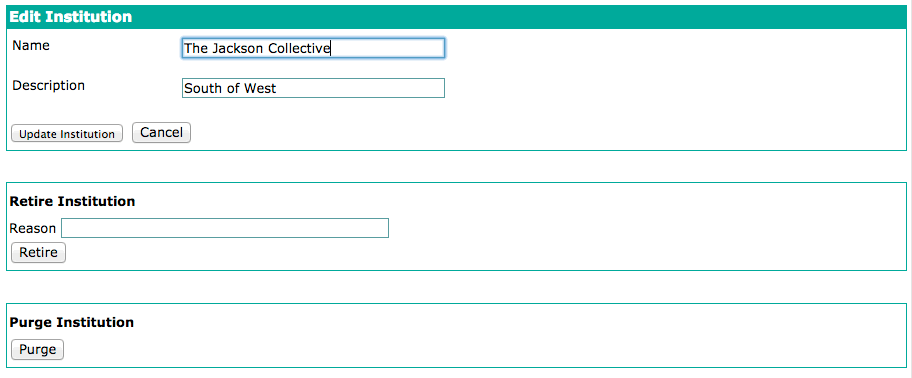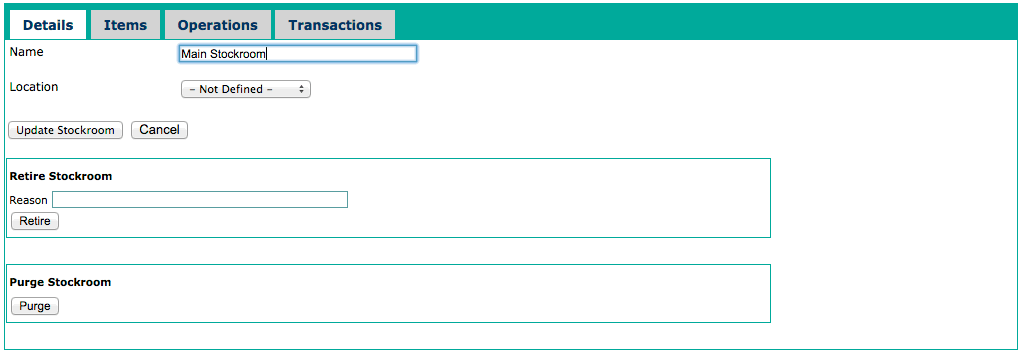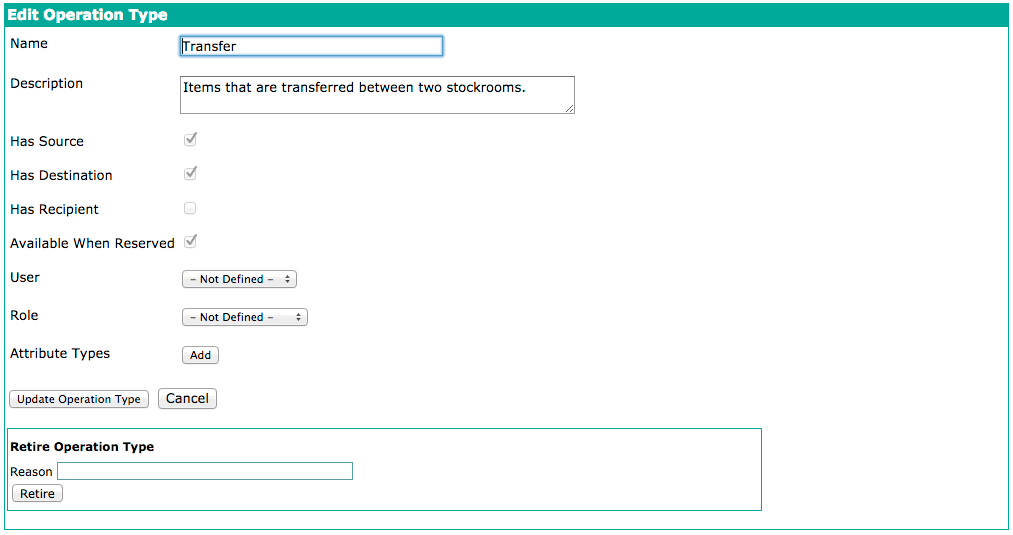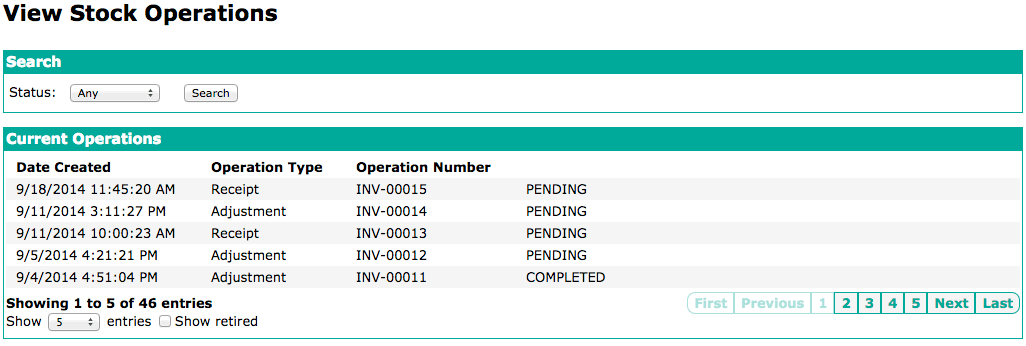OpenHMIS Inventory Module - Admin Pages
Inventory Administration Pages
Inventory Role Creation
The inventory role creation page allow administrators to add and remove inventory privileges to existing roles as well as create new roles with those same privileges.
The current set of inventory-related privileges is:
- Manage Inventory Items
- View Inventory Items
- Purge Inventory Items
- Manage Inventory Stockrooms
- View Inventory Stockrooms
- Purge Inventory Stockrooms
- Manage Inventory Metadata
- View Inventory Metadata
- Purge Inventory Metadata
- Manage Inventory Operations
- View Inventory Operations
- Edit Patient Identifiers
- View Administration Functions
- View Concepts
- View Locations
- View Navigation Menu
- View Users
- View Roles
Manage Items
Items, in the inventory module, are the products and service that can be purchased by patients or used by an institution. An item defines the details about the product or service including the name, department, price, and whether the item is a physical object (ie, can be tracked within stockrooms) and has an expiration.
The Manage Items page shows the list of currently defined items in an alphabetical list. The top search area can be used to find specific items by name or item code. Clicking on an item in the list will display the item details:
The item detail section allows users to change the item information. Items can have multiple codes and prices which can be added by clicking the associated Add button or removed by clicking the 'X' button next to the code or price to remove. If the item has physical inventory a list showing the current item stock is displayed. User can also retire and purge the item from the detail view; though it should be noted that items which have been referenced in a Cashier module bill or by item stock cannot be purged.
Clicking on the Add Item link displays an empty item detail section and allows for the creation of new items.
Manage Departments
Departments group items into cost centers and each item is required to have an associated department.
Clicking on a department displays the department details:
The administration pages in the OpenHMIS modules use a common UI and so this detail section should look familiar. Note that departments which are referenced by items cannot be purged.
Manage Institutions
Institutions are external entities where item stock can be distributed. The manage institutions pages allows administrators to add, remove, and edit institutions.
Clicking on an Institution will display the institution details:
Manage Stockrooms
Stockrooms are the locations where item stock is stored. The Manage Stockrooms pages allows administrators to add, edit, and view stockroom details.
Clicking on a stockroom will display the stockroom details section which is composed of 4 tabs. By default, the Details tab is selected which displays the general stockroom information:
The Items tab shows the current item stock stored in the stockroom:
The Operations tab shows the operations that have affected the stockroom:
Lastly, the Transactions tab shows the individual transactions that have been performed against the stockroom:
Manage Operation Types
There are currently six supported operation types (details here) which cannot be added to. These operation types are intended to cover all the types of item stock actions that would need to be performed and can be extended with attributes to gather institution-specific information. Administrators can also edit some operation type information and can retire operation types that are not needed.
The Manage Operation Types page shows a list of the current operation types:
Clicking on an operation type will display the operation type details:
View Stock Operations
The View Stock Operations page allows administrators to view and process stock operations.
Clicking on a stock operation with display the stock operation details:
For Pending stock operation, if the current user has access to be able to process the stock operation (as defined by the User/Role configured in the Operation Type), then buttons to Complete and Cancel will be available. Clicking either button will update the operation status to the specified status and perform the expected action (once again, as defined by the Operation Type).
Generate Item Mappings
To provide the initial steps towards linking OpenMRS Orders to OpenHMIS Bills and/or Stock Operations, Items can now be linked to OpenMRS concepts/drugs. While administrators can manually go through each item and search for the associated concept, the Generate Item Mappings page will attempt to find the more obvious mappings based on the Item and Concept name. Clicking on the Generate Item Mappings link will start mapping process:
This may take a few mintues depending on the number of items without concepts and the number of concepts in the system. Once loaded, a list will display the mappings that were found:
If the mapped concept is correct, users can check the checkbox for that item. If not, user can either try to find a better concept by typing in the concept textbox, selecting the preferred concept, and checking the checkbox, or simply leave the checkbox unchecked. Once users have reviewed the mappings and checked the ones they want to keep, they can click on the Save Items or Save Items and Get Next button
Clicking the Save Items button will save the checked mappings and take the user to the previous page (this is so that the mappings are not generated again). Clicking the Save Items and Get Next button will save the checked mappings and reload the list.
